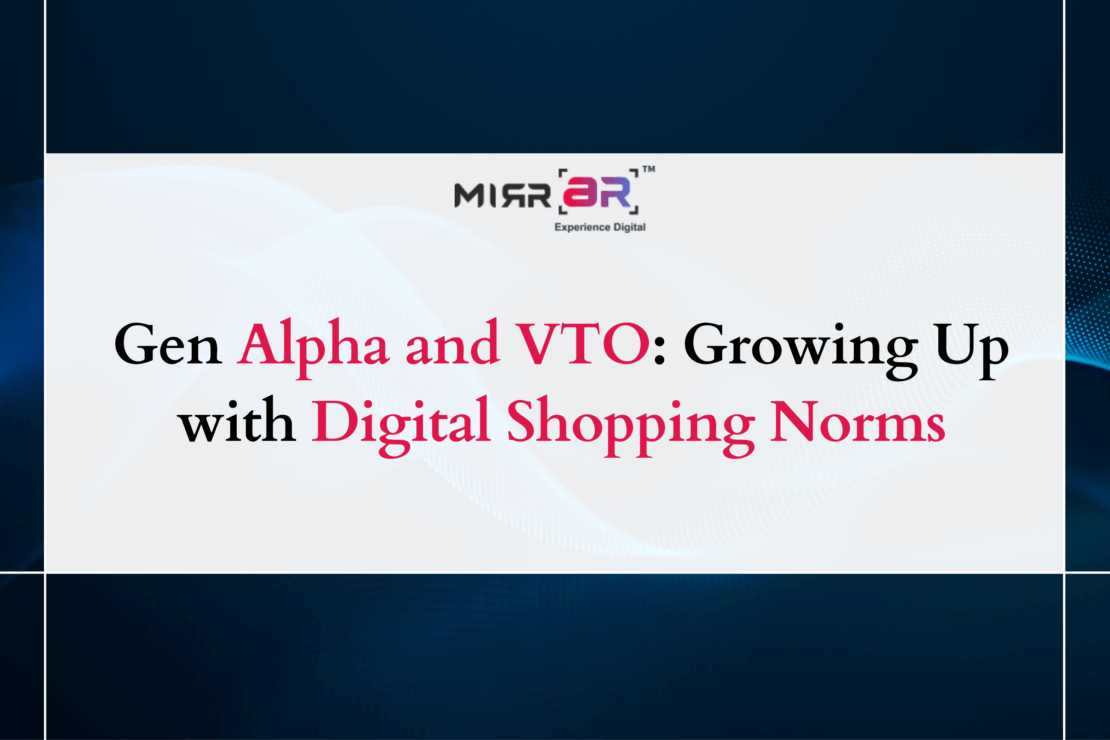
If millennials were the pioneers of online shopping and Gen Z turned it into a social experience, Gen Alpha is the generation growing up with digital shopping as the default. Born from 2010 onwards, this generation is surrounded by smart devices, AR filters, AI-powered recommendations, and the ability to shop with a few taps on a screen. One of the most transformative technologies shaping their shopping journey is Virtual Try-On (VTO)—a tool that allows users to preview products digitally before buying.
For Gen Alpha, VTO isn’t a novelty—it’s the norm. From trying on sneakers virtually to experimenting with sunglasses, makeup, and even virtual outfits for gaming avatars, this generation is learning to expect interactive, hyper-personalized shopping from the start.
Why Gen Alpha Shops Differently
Unlike previous generations, Gen Alpha has never known a world without smartphones, social media, or on-demand convenience. Their shopping habits are rooted in digital-first thinking—meaning physical stores may be supplementary rather than primary in their buying process. For them, shopping is less about visiting a mall and more about engaging with a product online through immersive experiences.
Because they’re growing up in a world where technology is intertwined with every aspect of daily life, Gen Alpha places high value on personalization, instant gratification, and interactive engagement. VTO caters perfectly to these needs by making shopping fun, fast, and frictionless.
The Influence of Gamification
One of the biggest reasons VTO resonates so well with Gen Alpha is its overlap with gaming culture. This generation is already used to customizing avatars in games like Roblox, Fortnite, and The Sims—changing hairstyles, outfits, and accessories with a click. VTO taps into that same sense of creative control but applies it to real-world purchases.
When trying on clothes or accessories virtually, Gen Alpha experiences the same excitement they feel when customizing a character in a game. This gamified approach not only makes shopping more entertaining but also encourages brand loyalty, as they associate these interactions with enjoyment rather than a transactional process.
VTO as a Learning Tool for Shopping
VTO isn’t just about trying on products—it’s also a decision-making aid. For Gen Alpha, growing up with VTO means learning early on how to evaluate fit, style, and compatibility before making a purchase. This could have long-term implications for how they approach consumption, potentially making them more discerning and mindful shoppers.
By seeing how an item looks in real time, Gen Alpha can build confidence in their choices and reduce the trial-and-error nature of buying online. In a world where sustainability and conscious shopping are becoming important values, this could help reduce waste and returns—a win for both consumers and brands.
The Role of Social Sharing
For Gen Alpha, shopping is inherently social—even if it happens online. Many of them will share their virtual try-on experiences with friends through messaging apps, social media, or within the metaverse. This peer validation plays a huge role in shaping their purchasing decisions.
Brands that integrate easy sharing options within their VTO platforms can tap into this social layer. Imagine a teen trying on a new pair of AR-powered sneakers, instantly sending the look to their friends, and getting instant reactions—this blends shopping, content creation, and social connection into one seamless experience.
The Metaverse Connection
Gen Alpha is also the first generation likely to live in a hybrid reality—splitting time between the physical and digital worlds. The metaverse, gaming ecosystems, and virtual spaces will be an extension of their social lives. In this context, VTO isn’t just about buying physical products—it’s also about building a digital fashion identity for avatars and online personas.
The lines between digital and physical shopping will blur as virtual clothing, accessories, and makeup become just as important as real-world items. Brands that offer VTO across both worlds—letting customers try on something for their avatar and themselves—will be highly appealing to this generation.
Opportunities for Brands
Brands aiming to capture Gen Alpha’s attention should treat VTO not just as a feature, but as part of their core shopping experience. This means:
- Making it fun and interactive – Add animations, AR effects, or challenges to keep engagement high.
- Integrating social sharing – Allow users to share their try-on moments instantly with friends.
- Blending digital and physical worlds – Offer VTO for both real-life products and digital fashion items.
- Prioritizing personalization – Use AI to recommend styles based on past try-ons and preferences.
By understanding that Gen Alpha will expect these experiences as standard, brands can build trust and loyalty early in the customer lifecycle.
Looking Ahead
As VTO technology becomes more advanced—with hyper-realistic AR, AI styling suggestions, and even haptic feedback—Gen Alpha will only grow more accustomed to immersive digital shopping. In the future, walking into a store may be less common than logging into a brand’s virtual showroom or metaverse boutique.
This shift presents both opportunities and challenges for retailers. Those who embrace VTO now will be well-positioned to meet the expectations of this generation, while those who delay risk becoming irrelevant in a world where digital-first shopping is simply shopping.
Conclusion
For Gen Alpha, VTO is not a future innovation—it’s a present reality. As the first generation to grow up with fully digital shopping norms, they see VTO as a natural part of the buying process, blending fun, personalization, and social connection. Brands that embrace this technology early and authentically will not only appeal to Gen Alpha’s preferences but will also secure a place in the evolving landscape of digital commerce.
